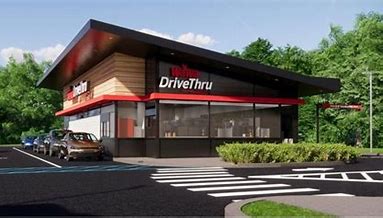LONDON—In the latest Shop Talk Live, the “Future of Drive-Thru and Convenience Store Planning,” moderator Dan Munford of Global Convenience Store Focus led a conversation with industry experts and retailers from Drivu and Emarat on how they’re adapting their sites to accommodate changing consumer behaviors.
Reinventing Outside Services
Joe Bona, president of Bona Design Lab, noted that in recent months the desire to bring drive-thrus to the global convenience store space is opening doors to unique ideas that are changing the industry. However, drive-thrus have also become a “risk-reward” endeavor where there are clear opportunities and potential watch-outs, such as speed of service.
“The pandemic has forced more people to consider drive-thru than ever before, as well as rethink the efficiencies and managing the increased volume,” said Bona. Drive-thru wait times have increased by at least 30 seconds across leading QSR chains, for example. “At some point you have to recognize that there will be a limit to how much people will be willing to wait in line,” he said.
In April and May, Bona noted that the lockdowns and no in-store dining were much more prevalent globally than today, and customers were willing to wait in line at drive-thrus for extended periods of time—even hours—because that may have been their only opportunity to leave their home. “As things have opened back up and people are back into routines, long [drive-thru] queues are a bit of a concern,” he suggested.
In terms of opportunities, retailers and QSRs alike are innovating how to move customers through quickly and more efficiently while delivering a seamless and integrated experience. Shake Shack, for example, is developing its first drive-thru concept with three lanes: two for food ordering and one for online orders/mobile app pickup. And Wawa is building a new store with a drive-thru to provide customers with a new service option.
“Now is the time for our industry to think about how the sites of the future should look and how much of the new technologies and different ways of serving people do we want to integrate in our overall site plans,” suggested Bona.
Murshed Mohamed, cofounder of Drivu, realized early during the global pandemic that consumers were initially more willing to try new food delivery methods like drive-thru and curbside pickup out of necessity, but the speed and convenience of these services has created a “stickiness” because now they like the higher level of service.
Dubai-based Drivu is designed for stores without a drive-thru infrastructure, where food and merchandise pre-ordered via its mobile app are brought to customers in their vehicles as they arrive onto the store site. Drivu is currently available at hundreds of locations across 12 cities in the UAE region. “It’s quick, convenient and highly efficient,” and there are no changes to the site required, said Mohamed.
In-Store Evolution
UAE-based Emarat, which recently embarked on its first new convenience store redesign in 25 years for its Freshplus brand, created a format that allows its product range to better reflect consumer demand, said Darren Smith, senior manager retail marketing at Emarat.
The company worked with Craig Phillipson, managing director of Shopwork, to essentially declutter the product selection and rework a floorplan that blends both qualitative and quantitative insights to better serve customers throughout their shopping journey. “These customer journeys are really changing now,” said Phillipson, adding that it’s important for retailers to consider actionable insights, like visual marketing and signage cues, that guide customers as they approach the store from a distance and ultimately step inside to shop.
“What’s really helped Emarat is the application of technology to understand what customers are doing,” said Phillipson, a nod to a heatmap that tracks the path to purchase and blends those insights with sales data and planograms. “It gives you a type of machine-learning methodology and deep insights into what your customers are doing and how long they’re dwelling in different areas of the store,” he said.
Nabile Aityoussef, network planning coordinator at Emarat, noted that the retailer needed to reduce its product range and focus on the best-sellers and bring more awareness to its “bakeria” bakery program, coffee and impulse merchandise.
The new store layout and use of heatmap technology is now guiding customers more seamlessly to that area of the store. “We have a better balance between the bakeria and the convenience store items,” he said, which helps the retailer sell more of the higher-margin foodservice items and create a destination for customers.
This week’s Shop Talk Live will cover “The Big Green Reset” inside convenience stores with Andrew Thornton of Thornton’s Budgens and Debbie Robinson, CEO of Central England Co-operative.
NACS captured more insights on what convenience retailers are doing to innovate their operations in the August NACS Magazine feature, “Last-Mile Demands.”

